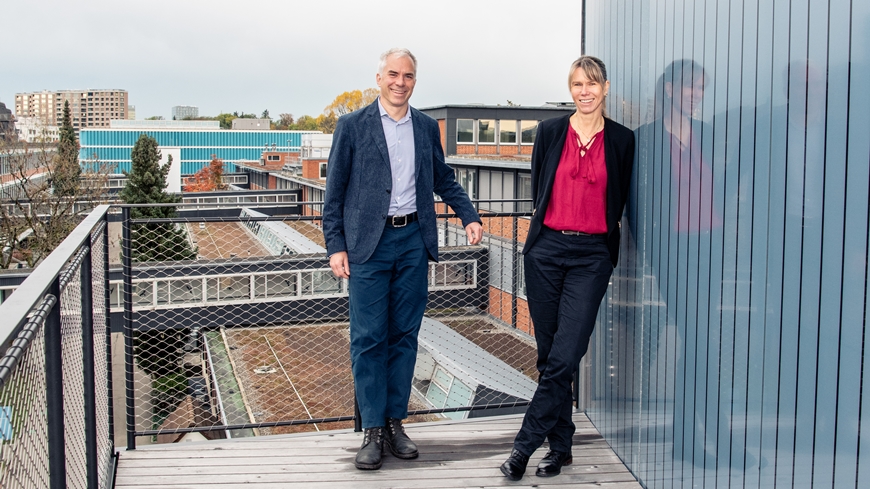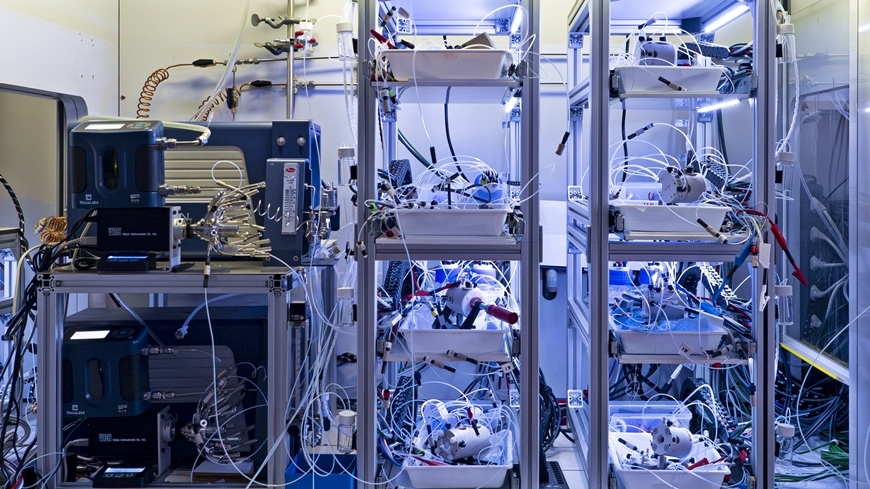Portrait Nathalie Casas
Embracing change
In October 2023, Nathalie Casas took over the lead of Empa's Energy, Mobility and Environment research department. Familiar with science and technology since childhood, she believes that humanity can save the climate from collapse – but that it will take more than "just" technology.
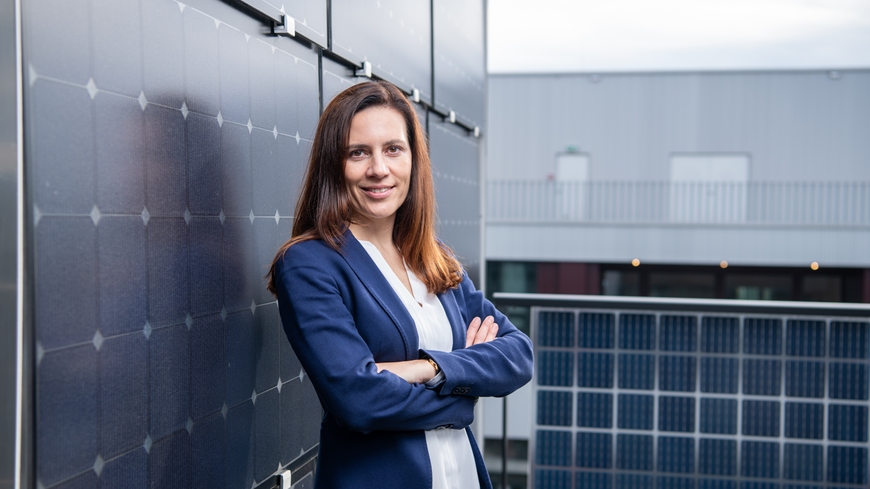
Nathalie Casas never intended to pursue a doctorate. But when she completed her Master's degree in chemical engineering at ETH Zurich in 2008, her supervisor at the time offered her a doctoral position, which she accepted without hesitation. "It was just so exciting," she recalls. This curiosity and her courage to occasionally throw her own plans overboard would shape her entire career. "I never had a fixed idea of what my path should look like. I just always did what felt right at the time."
Her latest move followed exactly that pattern: Since October 2023, the 40-year-old has been heading the Empa department Energy, Mobility and Environment. The topic of her doctoral thesis, CO2 capture, has been a recurring theme throughout her career, first at Sulzer Chemtech and later at the Swiss start-up Climeworks.
New threads are now being added, which makes Casas particularly happy. "We have a very broad spectrum of research in the department, from mobility to analytics and life cycle assessments all the way to batteries," she says. CO2 capture is – of course – also part of this, but it doesn't stop there: Empa researchers are also investigating how the captured CO2 can be processed to produce valuable materials and compounds. Casas: "It's incredible what Empa does. I'm learning something new every day."
Of goals and coincidences
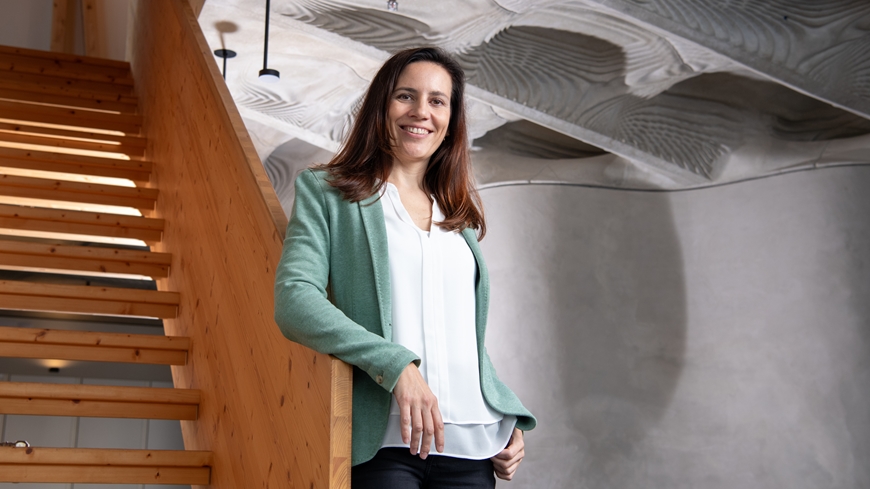
Casas' love of science began in early childhood. Her mother is a microbiologist, her father a mechanical engineer. While her father was away on business trips, her mother took her to the lab on weekends. "I was allowed to count bacteria under the microscope and felt terribly important," laughs Casas. "But now I suspect that my mother only invented this task to keep me busy."
When she graduated from school, Casas was determined to study at ETH Zurich, either chemistry or materials science. She found it difficult to make up her mind, so she let chance make the decision. "For materials science, I would have had to do an internship first," she recalls. "I set myself a deadline and said: If I have an intern position by that date, I'll study materials science." The acceptance for the internship came three days too late: Casas went on to study chemistry and chemical engineering.
Casas has no regrets about this chance decision – it has ultimately led her back to materials science, now as a manager instead of a researcher. As much as she enjoyed working in the lab during her doctorate, the new department head likes working with people even more. They are also what she most appreciates about Empa. "The people here are very intrinsically motivated," she says. "They are enthusiastic about their subjects and about science, and they want to make a difference."
Together we achieve more
The researchers in Casas' department can certainly make a difference. After all, energy, mobility and the environment are all burning issues that concern not only Empa and Switzerland, but the whole world. The climate targets can only be achieved with major societal changes – and changes are sometimes painful, Casas knows. "Many climate-neutral solutions are just as good as the technologies and habits we have today. It's the change itself that is challenging for us," she says.
Empa is up to this challenge, the department head believes. "We have a great deal of expertise that we can use to support society and industry in this change," Casas says. As an example, she cites the Mining the Atmosphere initiative, which interconnects a wide variety of research groups and approaches and thus bundles Empa's strengths for the greatest possible impact. "Our advantage at Empa is that we can also take the first step out of the laboratory. With our demonstration platforms move, ehub and NEST, we can show society and policymakers: The technology is here – and it works in practice," says Casas.
So will technologies such as CO2 capture solve all of our problems? Casas firmly denies this. "Cleaning up is always more expensive than avoiding emissions in the first place," she explains. Although the technology is key to offsetting unavoidable residual emissions, the complex process is not a solution for the large-scale elimination of avoidable car exhaust gases and the like.
Since Casas first studied carbon capture in 2008 as part of her doctoral thesis, the field has developed considerably. At the same time, the urgency has grown. Nevertheless, she remains optimistic. "My generation is the first to feel the effects of climate change – but we can still do something about it," says Casas. "Our parents' generation was barely aware of the damage. And our children will have to face the consequences. We are feeling the consequences, but we can still prevent a lot of them – although it won't be easy."
Nathalie Casas
Nathalie Casas studied chemical engineering at the ETH Zurich, where she obtained her Master's degree in 2008 and went on to complete her doctorate. She then took up a position as Application Manager at Sulzer Chemtech, where she was responsible for a large part of the CO2 capture projects. In 2017, Casas moved to Climeworks, a spin-off of ETH Zurich, where she first worked as Head Development & Engineering, then as Head of Technology before joining Empa in October 2023.
Dr. Nathalie Casas
Mobility, Energy and Environment
Phone +41 58 765 3933
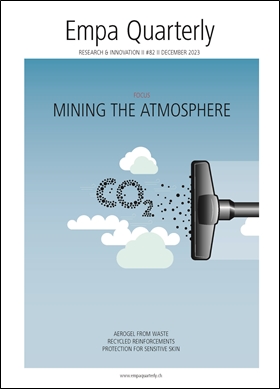
Empa Quarterly#82 Mining the Atmosphere
To limit climate change, we need to compensate not only for future emissions, but also for historical ones. One solution would be the "atmospheric vacuum cleaner": we remove the excess CO2 from the atmosphere. But what do we do with it? Instead of extracting the carbon for polymers, medicines, fibers, fuels and the like from crude oil, we use atmospheric CO2. This is the simple – yet extremely challenging in technical terms – idea behind Empa's new research initiative, Mining the Atmosphere.
Read the EmpaQuarterly online or download the pdf-version.
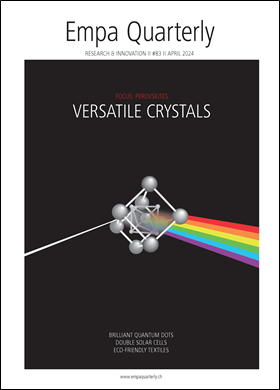
Empa Quarterly#83 Perovskites: Versatile cristals
Over 180 years ago, a curious crystal was discovered in the Ural Mountains. Today, it has given rise to an entire class of materials that is of great interest to researchers: perovskites. What all perovskites have in common is their crystal structure, which gives them unusual properties. By changing the exact composition of the perovskite, scientists can control these properties. Empa researchers are using this promising material to develop solar cells, detectors and quantum dots.
Read the EmpaQuarterly online or download the pdf-version.
-
Share

|
CO2-binding society Empa Director Tanja Zimmermann and Eawag Director Martin Ackermann want to provide answers to the climate crisis with new initiatives and ambitious goals. |
|
Defects welcome Is it possible to convert CO2 back to fuels or other useful chemicals? Absolutely – but not in a very targeted way just yet. Empa researcher Alessandro Senocrate is looking at defects in materials that will help us achieve this goal. |







